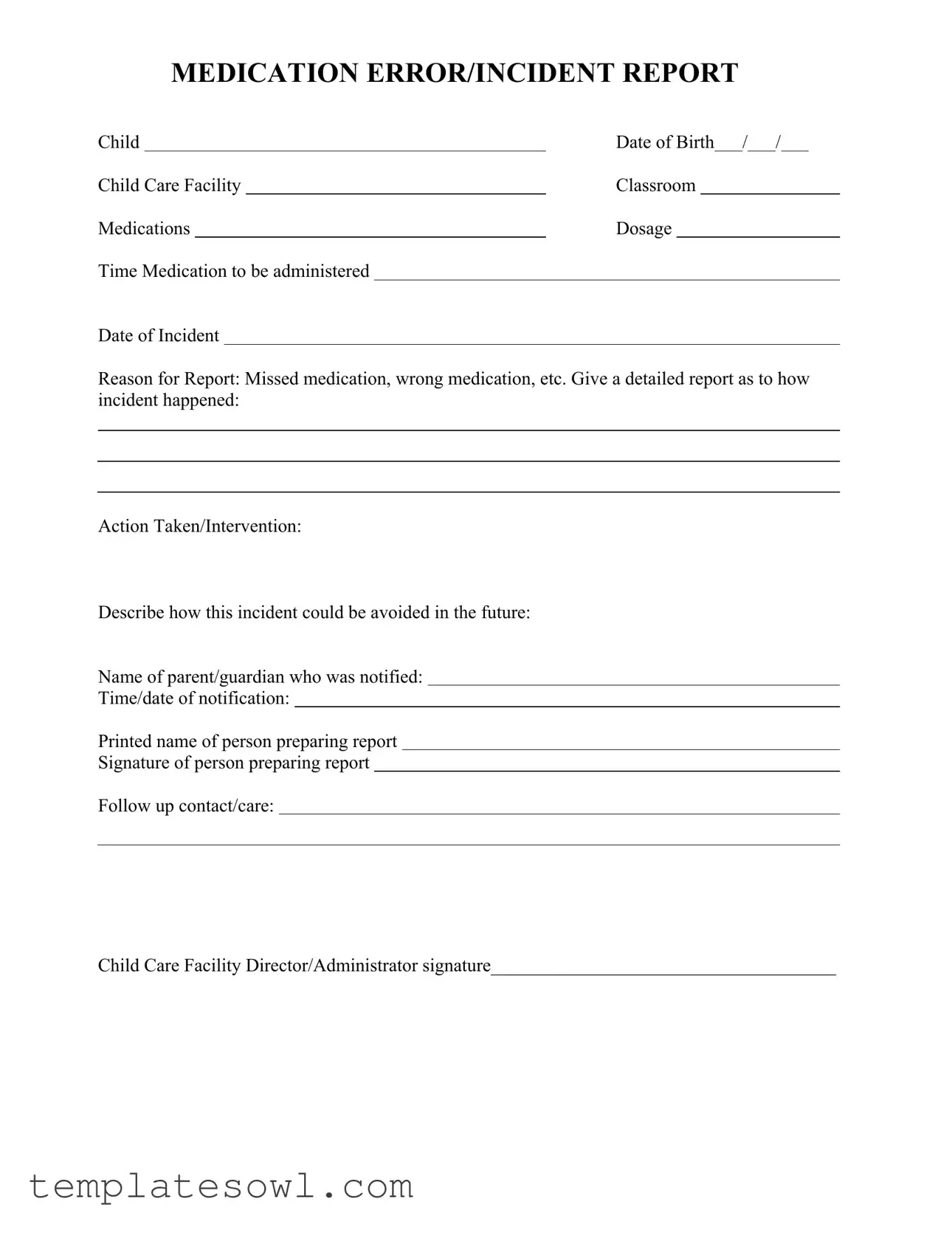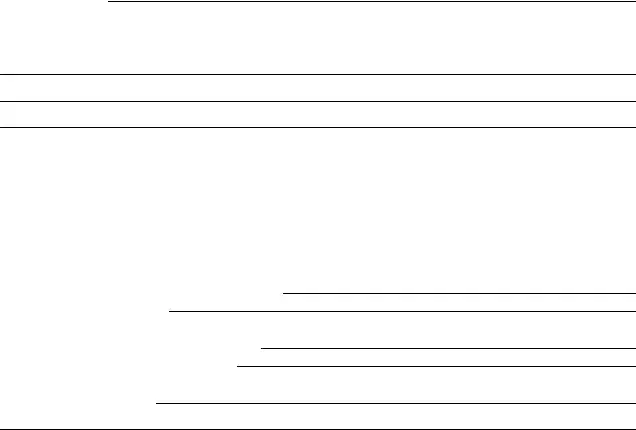What is the purpose of the Medication Incident Report form?
The Medication Incident Report form is designed to document any incidents related to medication administration within a childcare facility. This could include missed medications, wrong doses, or any other errors that may occur. By systematically reporting these incidents, facilities can identify patterns, implement corrective actions, and improve overall medication safety.
Who should fill out the Medication Incident Report?
The report should be filled out by the staff member who discovers or is involved in the medication incident. It is crucial that the person preparing the report has firsthand knowledge of the incident to ensure the details are accurate and complete.
What information is required on the form?
The form requires specific information such as the child’s name and date of birth, the details of the medication (including dosage, time, and the medication to be administered), and the date of the incident. Additionally, the person filling out the report should provide a detailed account of how the incident occurred, what actions were taken in response, and suggestions for preventing future incidents.
How can incidents be prevented in the future?
To avoid future incidents, it is helpful to analyze the circumstances surrounding the error. Reported suggestions often include improving staff training on medication administration, implementing double-check procedures, and enhancing communication among staff and parents regarding medication schedules. Documenting these recommendations in the report assists in developing an action plan.
What should be done after a report is submitted?
After the report is submitted, the childcare facility director or administrator should review it for completeness and accuracy. They may conduct a follow-up discussion with the staff member involved and ensure that the suggested actions for prevention are put into effect. Follow-up care for the child affected may also be necessary, depending on the nature of the incident.
How is the parent or guardian informed of the incident?
The report requires details on the parent or guardian who was notified about the incident, including the date and time of notification. It is essential that communication with families is prompt and thorough, providing them with the necessary information about the incident and any actions taken to ensure the child's well-being.
Is the report confidential?
Yes, the Medication Incident Report is considered confidential. It contains sensitive information regarding a child's medication and health. Access to the report should be restricted to authorized personnel within the childcare facility, and parents or guardians should only receive information pertinent to the incident involving their child.

